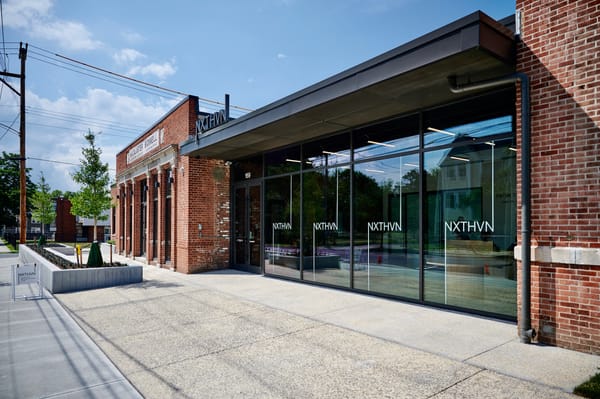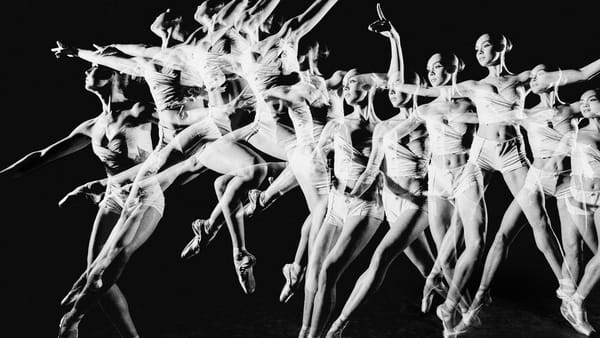The Man Behind the Squeegee
Corinna Belz’s new documentary, Gerhard Richter Painting (playing at Manhattan's Film Forum from now until March 27), offers a rare glimpse into the life and work of the celebrated and self-proclaimed “secretive” German artist. For a little more than 90 minutes, we watch Richter labor over two new p
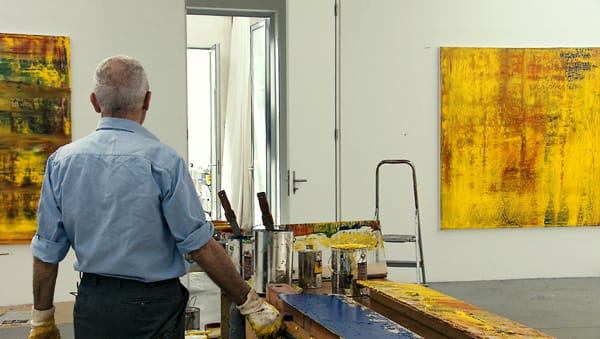
Corinna Belz’s new documentary, Gerhard Richter Painting (playing at Manhattan’s Film Forum from now until March 27), offers a rare glimpse into the life and work of the celebrated and self-proclaimed “secretive” German artist. For a little more than 90 minutes, we watch Richter labor over two new paintings, as well as devise upcoming gallery shows and attend large-scale exhibitions of his own work. Although the reasoning behind Richter’s artistic choices may remain largely mysterious, a sympathetic rendering of the artist emerges. Though he carries the mantle of being one of the “world’s greatest living painters,” his aspirations for his latest projects are recognizably human and endearingly modest: He wants their strengths to be recognized and their flaws to be overlooked.
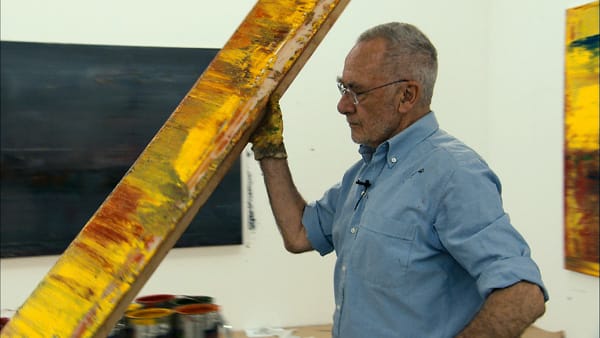
Belz’s approach to her subject is generally unobtrusive. Recording Richter as he creates in his brightly lit white studio, she remains off-screen, occasionally asking questions about his artistic decisions from behind the camera. These scenes are shot primarily in static long takes, quietly observing the master at work. There are a few instances where her technique makes itself known, as when she zooms in so closely on pails of paint being poured that the cinematic image itself becomes as abstract as one of Richter’s paintings. Another example is a series of dissolves that shows a single painting in progressive stages of its evolution. The last, and perhaps most dynamic, are the quick pans she does of miniatures of Richter’s prior works. While she does not afford the viewer much time to savor the images, she does give an idea of his scope and his many variations in style and subject matter. But mainly her camera seems impatient to catch up with what he’s working on now.
From the beginning of the film, she tracks Richter as he creates two new paintings side by side. It’s thrilling to see these paintings being born individually and in dialogue with each other. As he works on them in tandem, dragging his ladder from one to the other, Richter is not stingy with the paint, covering swaths of canvas with a large dripping brush and slow, deliberate strokes. His next move usually involves a squeegee, which smears the colors across the surface. Occasionally the camera closes in on his paint-splattered gloves as he works or sometimes just on his pensive blues eyes as he contemplates his next step.
The images of the film in these moments are vibrant and sumptuous. Richter’s starting color palette comprises vivid yellows, reds, blues, and greens (“no earth tones,” as one of his two assistants informs us). The soundscape of the painting sequences is just as sensual as the images Richter makes: the squish of a brush making contact with paint, the scratchiness of a squeegee as he guides it across the canvas, the screech of a metal ladder’s legs as he pushes it across the floor. Other filmmakers may have scored these scenes with music, but Belz’s decision to highlight the sounds of the painting process makes her documentary aurally alive in ways that the paintings themselves can’t be.
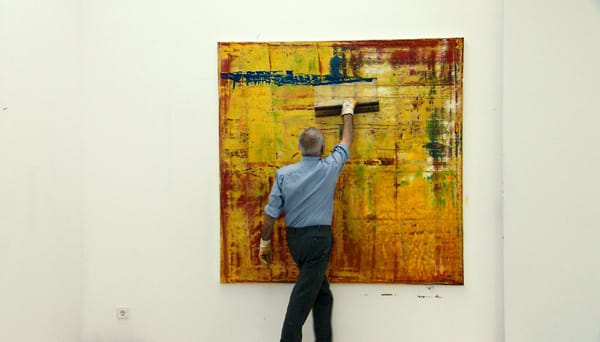
Richter revisits the paintings day after day, adding a touch of paint here, removing a dab there. Eventually he may decide to paint over almost an entire canvas in white, turning the fields of bold color into pale pinks and grays — more Morandi than Mondrian. Richter obliquely explains that he knows when a painting is done “when nothing is wrong with it,” but the reasons behind those revelations will likely remain unclear to the viewer. So many iterations of his paintings seem intriguing and gorgeous in their own right, but then he returns to them to rework their surfaces again and again.
At one point in the documentary, Richter attends an exhibition of his portraits at the National Portrait Gallery in London. The subjects of his portraits are deliberately obscured, their heads often turned away from the viewer’s eyes. People seem out of reach from him, even as he observes them head-on. Back in his studio, he sifts through a mountain of yellowing family photos, deciding which to keep and which to cast aside. He knows the smiling, pretty woman in several pictures is his mother, but he does not remember his mother in that moment. “The photos show the world of the photo, not the world that was photographed,” he says.

Perhaps it is impossible for Gerhard Richter Painting to show us Richter’s world itself, but within the world that the film creates, he is a thoughtful, provocative subject. He seems much younger and spryer than his 79 years, though the lines of his face are etched deep. While he is patient with demanding photographers and autograph-seeking fans, he seems weary of the press and of his fame, and being filmed by Belz as he works has made him feel naked and self-conscious. He likens it to being in the hospital, only more painful. Worse, being observed is effecting how he carries himself in the studio and the decisions he makes while painting. The paradox of working in private for so long only to turn the work over to the public when he is finished isn’t lost on him. And even at this point in his venerable career, he is not impervious to the viewpoints of others. His two studio assistants know by now not to comment on a painting while it is still in progress. If they praise it too much, he will just decide to “destroy it.”
Richter comes across tireless and forever engaged by his process, and at times, pushing that giant squeegee through countless layers of paint seems like a Sisyphean task. But when he uncovers an unexpected streak of yellow while squeegee-ing a canvas, he is visibly delighted by the surprise. “The paintings do what they want,” he claims, and rarely do they turn out as he had anticipated. With every abstract painting he makes, Richter is chasing that elusive point of completion and there is always a risk that he won’t be satisfied with what he finds. But at nearly 80, he returns to his studio, still puzzling it all out. As elusive as his process may remain for the viewer, Richter’s guiding principle is as inspiring as it is matter of fact. “Working through it,” he says, “is better than doing nothing.”
Gerhard Richter Painting continues at Film Forum (209 West Houston Street, Greenwich Village, Manhattan) until Tuesday, March 27. The movie will be opening in Riverside, California, San Francisco and Hartford, Connecticut in April and May. Visit the movie website for more screening locations and dates.
All press images for Gerhard Richter Painting via gerhardrichterpainting.com.

